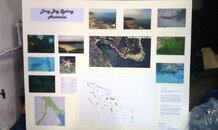rpowton
Registered
I guess this also depends on what you term a 'dive site'...
If referring to creating a map of the 'quarry' it might actually be overkill to do the whole thing but a better apprach may be to take on area that you well cover in a couple of dives, especially an area that you may cover with OW candidates doing their checkout dives and map this.
This way it does not take you the entire summer but is could also be immediatly useful in giving the OW candidates a good background to what they will see while doing their checkouts.
If referring to creating a map of the 'quarry' it might actually be overkill to do the whole thing but a better apprach may be to take on area that you well cover in a couple of dives, especially an area that you may cover with OW candidates doing their checkout dives and map this.
This way it does not take you the entire summer but is could also be immediatly useful in giving the OW candidates a good background to what they will see while doing their checkouts.





